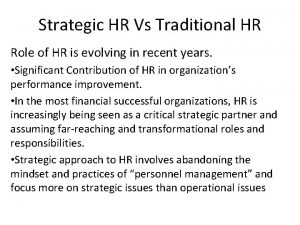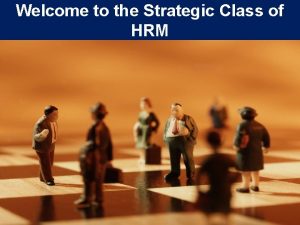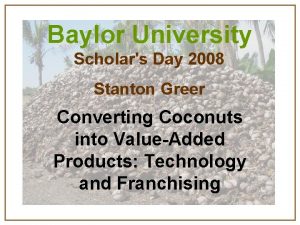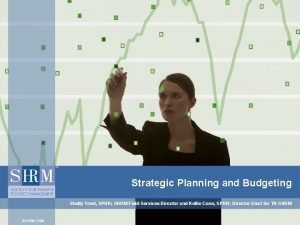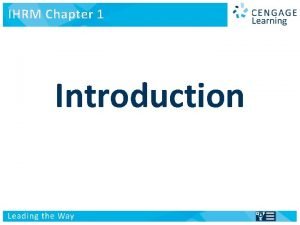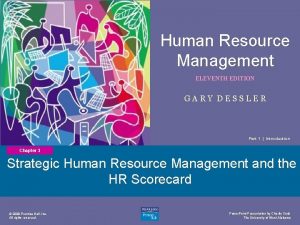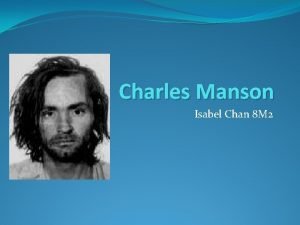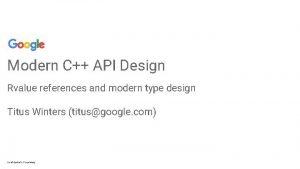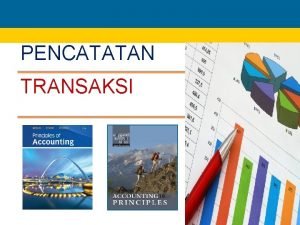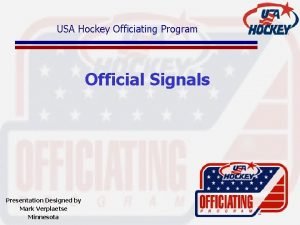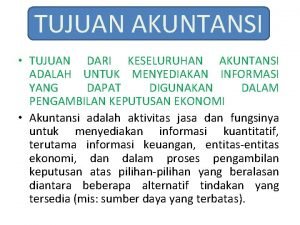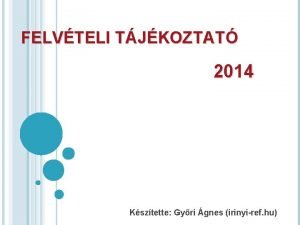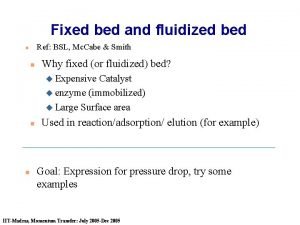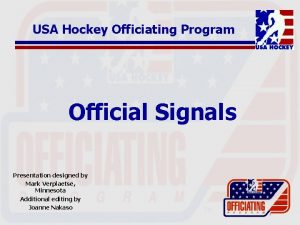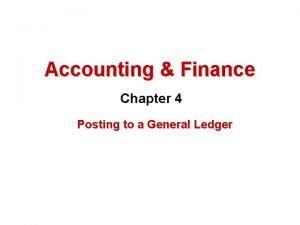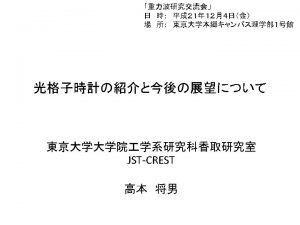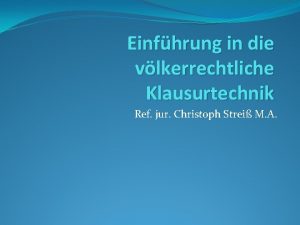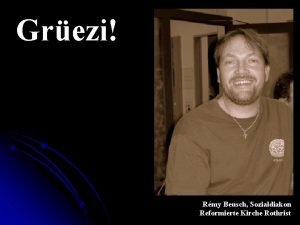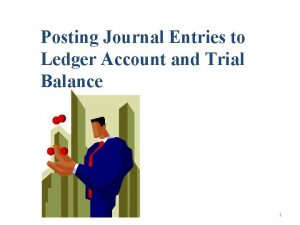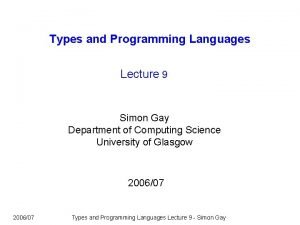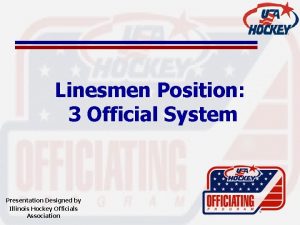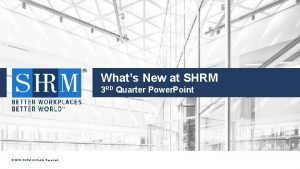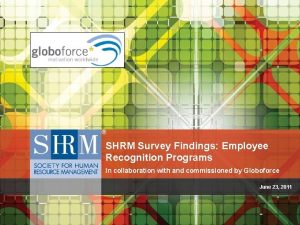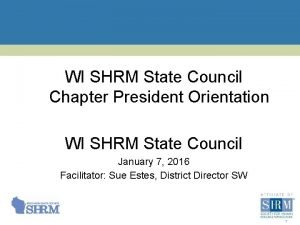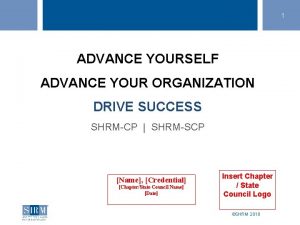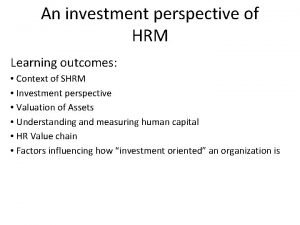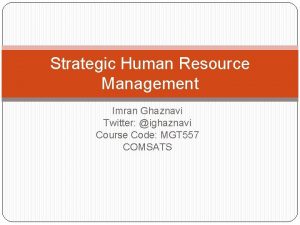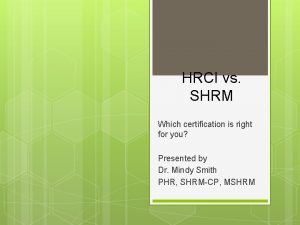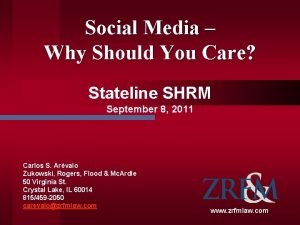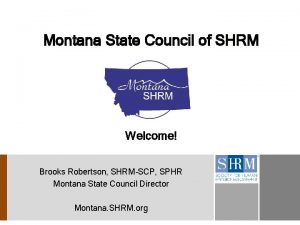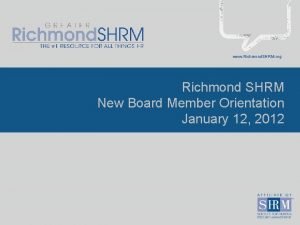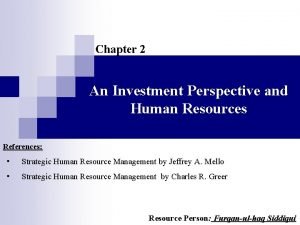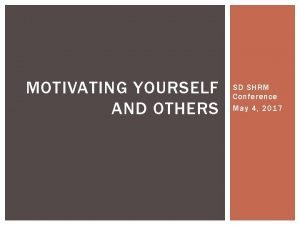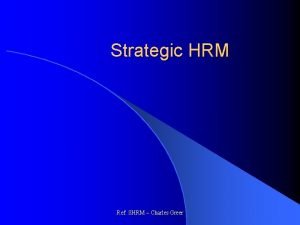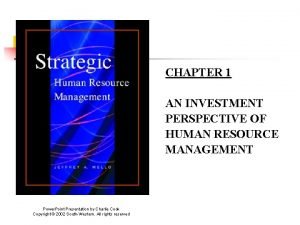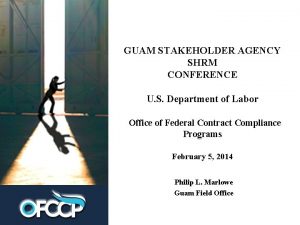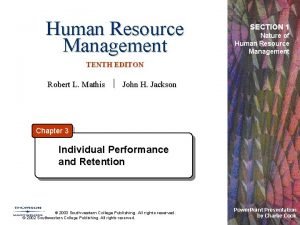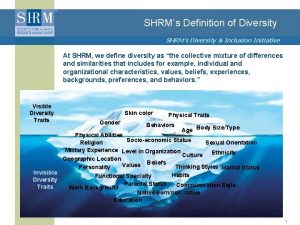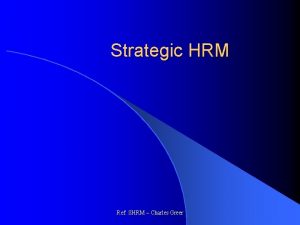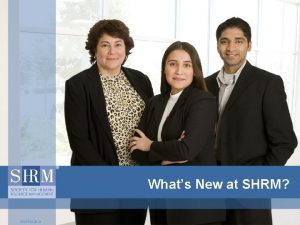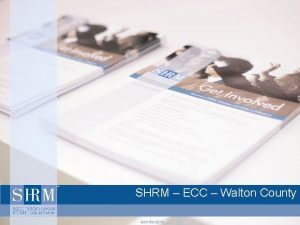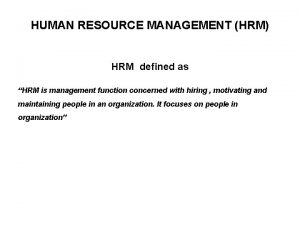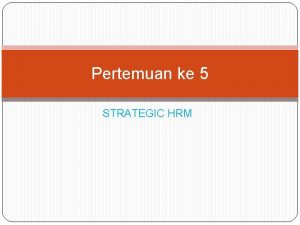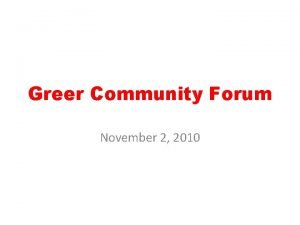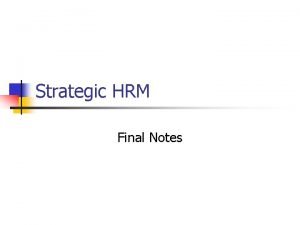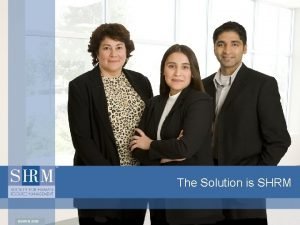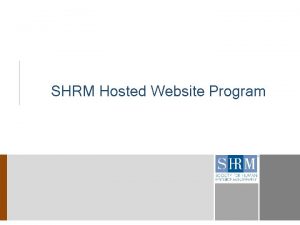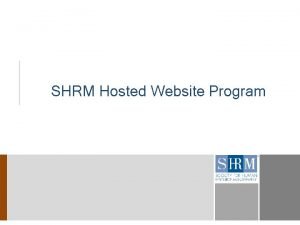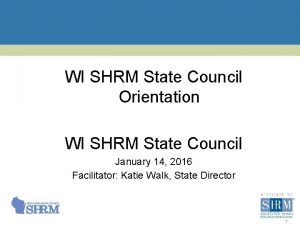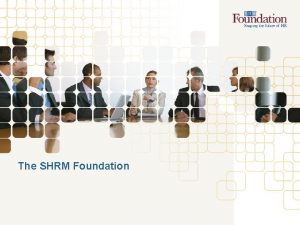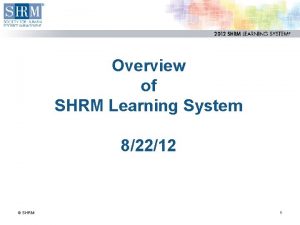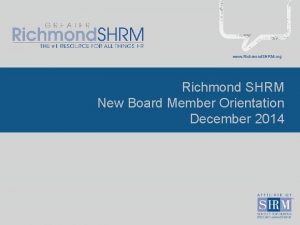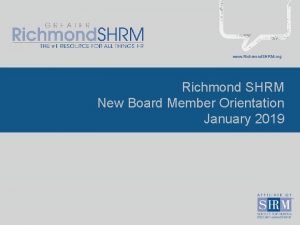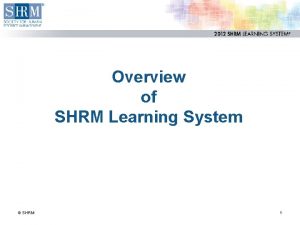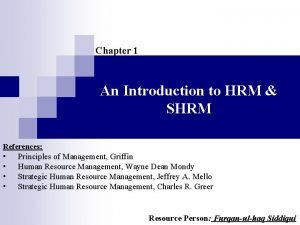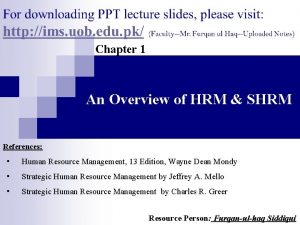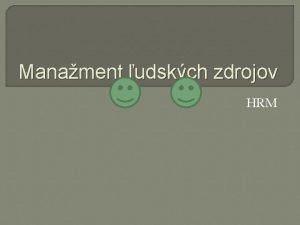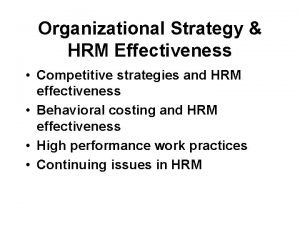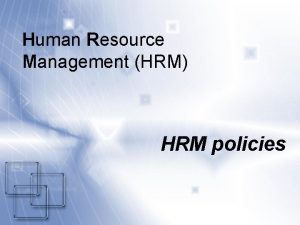Strategic HRM Ref SHRM Charles Greer What is






























































- Slides: 62

Strategic HRM Ref: SHRM – Charles Greer

What is strategy? l What is strategy? – Is it a plan? – Does it refer to how we will obtain the ends we – – – seek? Is it a position taken? Just as military forces might take the high ground prior to engaging the enemy, might a business take the position of low-cost provider? does strategy refer to perspective, to the view one takes of matters, and to the purposes, directions, decisions and actions stemming from this view? Does strategy refer to a pattern in our decisions and actions? does repeatedly copying a competitor’s new product offerings signal a "me too" strategy? Ref: SHRM – Charles Greer

Meaning l Strategy is a term that comes from the Greek strategia, meaning "generalship. " In the military, strategy often refers to maneuvering troops into position before the enemy is actually engaged Ref: SHRM – Charles Greer

De fin iti on l Strategy is deciding where to go and the means to get there. l Strategy is a declaration of intent. Prof. S. Pattnaik

Levels of Strategy-Making in a Diversified Company Corporate-Level Managers Corporate Strategy Two-Way Influence Business-Level Managers Business Strategies Two-Way Influence Functional Managers Functional Strategies Two-Way Influence Operational managers Operating Strategies

What is strategic management? l A continuous, iterative process aimed at keeping an organization as a whole appropriately matched to its environment (Samuel C. Certo and J. Paul Peter, Strategic Management) l Keeping the business in tune with management and marketing forces both outside and inside the firm Ref: SHRM – Charles Greer

Competitive strategy leads to competitive advantage – Generates supernormal ROI – Offers services of value – Uses cost effective technology – Avoids erosion of competitive advantage by exploiting and developing a technological base

Ex 1 -6: Strategic Management Process Company mission and social responsibility Possible? Internal analysis Desired? Feedback External environment Strategic analysis and choice Long-term objectives Short-term objectives; reward systems Generic and grand strategies Functional tactics Restructuring, reengineering and refocusing the organization Legend Major impact Minor impact Strategic control and continuous improvement Policies that empower action

Strategic analysis HRM “To be competitive, organizations in many industries must have highly skilled. Knowledgeable workers. They must also have a relatively stable labour force since employee turnover works directly against obtaining the kind of coordination and organizational learning that leads to fast response and high-quality products and services” - Edward Lawler Ref: SHRM – Charles Greer

WHAT IS SHRM? l Strategic human resource management has been defined as ‘the linking of human resources with strategic goals and objectives in order to improve business performance and develop innovative organizational culture that foster innovation and flexibility.

Some Organisational Strategies Company Strategic Principle General Electric Be number one or number two in every industry in which we compete, or get out Wal-Mart Low prices, every day 3 M Foster innovation Prof. S. Pattnaik

Aim of SHRM l Long-term Objectives ü Profitability ü Return on investment ü Competitive position ü Technological leadership ü Productivity ü Employee relations ü Public responsibility ü Employee development

Aim –Short term • Detailed work planning • Emphasis on technical qualifications and skills • Emphasis on job-specific training • Emphasis on job-based pay • Use of performance appraisal as a control device • Team-based training

Types of HR Strategy l 1) general strategies such as Ø high-performance working team – Supplying competitive intelligence regarding the external environment – Supplying information regarding the company’s internal human strengths and weaknesses. – Showing how the firm’s HR activities can and do contribute to creating value for the company

l 2) specific strategies relating to the different aspects of human resource management such as learning and development and reward(Human capital management, corporate social esponsibility, l organization development, engagement, knowledge management, employee resourcing, talent management, learning and development, reward, employee relations, and employee well-being

Difference Between Strategic HRM & HR strategies: STRATEGIC HRM HR Strategies [ HR Strategies. HRS ] General Approach to Strategic Mgnt of HR Outcome approach [manifestation] of general HRM Aligned with organizational intention about future Focus on specific organizational intentions about direction what needs to be done. Focus on long term people issue Focuses on short term performance measures that is result/outcome. SHRM decisions are built into strategic business HRSs decisions are derived from SHRM. plan Deals with macro-concerns such as quality, HRSs are concerned with ensuring availability of commitment, performance, culture & mgnt an efficient workforce, training, good employee development relations Defines areas in which specific HR strategies need HRSs facilitate the successful achievement of Ref: SHRM – Charles Greerobjectives + goals to be developed. corporate

Approaches to SHRM l The resource-based approach-A resource-based approach will address methods of increasing the firm’s strategic capability by the development of managers l and other staff who can think and plan strategically and who understand the key strategic issues.

l Strategic l The fit- HR strategy should be aligned to the business strategy (vertical fit). l HR strategy should be an integral part of the business strategy, contributing to the business planning process as it happens.

l High-performance l Aims management – to make an impact on the performance of the firm through its people in such areas as productivity, quality, levels of customer service, growth, profits and, ultimately, the delivery of increased shareholder value. l

l High-performance management practices include rigorous recruitment and selection procedures, extensive and relevant training and management development activities, incentive pay systems and performance management processes.

l High-commitment management l HRM is its emphasis on the importance l of enhancing mutual commitment. ‘A form of management which is aimed at eliciting a commitment so that behaviour is l primarily self-regulated rather than controlled by sanctions and pressures l external to the individual, and relations within the organization are based l on high levels of trust. ’

l High-involvement managementl The aim is to create a climate in which a continuing dialogue between managers and the members of their teams takes place in order to define expectations and share l information on the organization’s mission, values and objectives. Ref: SHRM – Charles Greer

Types of Strategic Planning l Corporate-level strategy – Identifies the portfolio of businesses that, in total, comprise the company and the ways in which these businesses relate to each other. l Diversification strategy l Vertical integration strategy l Consolidation strategy l Geographic expansion strategy Prof. S. Pattnaik

Types of Strategic Planning (cont’d) l Business-level/competitive strategy – Identifies how to build and strengthen the business’s long-term competitive position in the marketplace. l Cost leadership l Differentiation l Focus Prof. S. Pattnaik

Types of Strategic Planning (cont’d) l Functional strategies – Identify the basic courses of action that each department will pursue in order to help the business attain its competitive goals. Prof. S. Pattnaik

Methodology for strategy development l Strategic analysis – Environmental analysis l l human resource environment human resource legal environment – Establish organizational direction l Strategy formulation – Human resource planning l Strategy implementation – Work force utilisation and employment practices – Reward and development system l Strategic control – Performance impact of human resource practices – Human resource evaluation Ref: SHRM – Charles Greer

Strategy formulation What are the purpose(s) and objective(s) of the organization? l Where is the organization presently going? l What critical environmental factors does the organization currently face? l What can be done to achieve organizational objectives more effectively in the future? l Ref: SHRM – Charles Greer

Strategy formulation process l l l Development of organizational philosophy and mission statement Environmental scanning Analysis of SWOT Formulation of strategic objectives Generation of alterative strategy Evaluation and selection of strategies l Informal / incremental strategic planning – Managed/logical incremental planning A strategy is the pattern or plan that integrates an Greer organisation’s major goals, policies, Ref: SHRM – Charles and action sequences into a cohesive whole

HR strategy ? 'a human resource system that is tailored to the demands of the business strategy' -Miles and Snow 1984 'the pattern of planned human resource activities intended to enable an organization to achieve its goals' - Wright and Mc. Mahan 1992 “the pattern planned human resource deployments and activities intended to enable an organisation to achieve its goals” Ref: SHRM – Charles Greer

Types of HR Strategy l 1) general strategies such as high-performance working l 2) specific strategies relating to the different aspects of human resource management such as learning and development and reward(Human capital management, corporate social esponsibility, l organization development, engagement, knowledge management, employee resourcing, talent management, learning and development, reward, employee relations, and employee well-being

SHRM concern is to ensure – HR management is fully integrated with the strategy and strategic needs of the firm – HR policies cohere across policy areas and areas of hierarchy – HR practices are adjusted and used by line manages and employees as part of their everyday work Ref: SHRM – Charles Greer

l Strategic HRM is about improving business performance through people. l The major concerns of strategic HRM are to meet the business needs of the organization and the individual and collective needs of the people employed in it. l strategic HRM can make a contribution to improving business performance.

Strategic HRM l Needs investment –ROI l l l Technical skills (pace of technological change) Knowledge and capabilities Management of critical and Difficult HR areas l l l Cost of investment Reduction in total Labour cost Efficiency in operation Optimal use of human resources A source of competitive advantage l l (IMPORTANCE) Management of change (Resistance to change) Lack of trust Antagonistic labour Motivational problems Management relations Economic turbulence l l Within the country (turbulence) Globalisation Dramatically changing demographics Differences in workforce values Strategic human resource management and ∟ HRP are considered important to manage uncertainties; HR is integrated with strategy; Integrating and aligning HR function with strategy Ref: SHRM – Charles Greer

Benefits of SHRM Identifying and analysing external opportunities and threats that may be crucial to the company's success. 2. Provides a clear business strategy and vision for the future. 3. To supply competitive intelligence that may be useful in the strategic planning process. 4. To recruit, retain and motivate people. 5. To develop and retain of highly competent people. 6. To ensure that people development issues are addressed systematically. 7. To supply information regarding the company's internal strengths and weaknesses. 8. To meet the expectations of the customers effectively. 9. To ensure high productivity. 10. To ensure business surplus thorough competency 1. Ref: SHRM – Charles Greer

Theoretical frame work of SHRM Institutional / Political forces Firm strategy Resource based view of the firm Resource dependence institutional HRM Practices Cybernetics Agency/transaction costs HR Capital pool (Skills, abilities) HR behaviors Ref: SHRM – Charles Greer Behavioral approach Firm level outcomes (performance, satisfaction, absenteeism etc)

Theoretical frame work of SHRM l Strategy driven – Resource based view l Competitive advantage based on unique allocation of resources {selection /Compensation package} (TCS) – Behavioral view l Control and influence the behaviors of individuals (Infosys) – Cybernetics systems l Adoption or abandonment of practices based on feedback on contributions to strategy (Bosch – MICO) – Agency/transactions cost view l Use of control systems, performance evaluation and reward systems etc – (In the absence of performance evaluation strategy may not be pursued) l Non-Strategy driven – Resource dependence and power theories – Power and politics= legislation, unionization, control of resources, expectations of social responsibility. – Institutional theory – In appropriate performance evaluation dimensions (inertia / rational decision making. appraisal Ref: SHRM – Charles Greer

International strategy l Multinational, global and transnational strategies l Strategic alliances l Sustainable global competitive advantage l Globally competent managers l Location of production facilities Ref: SHRM – Charles Greer

Approaches to SHRM l The resource-based approach-A resource-based approach will address methods of increasing the firm’s strategic capability by the development of managers l and other staff who can think and plan strategically and who understand the key strategic issues. l Strategic fit-The HR strategy should be aligned to the business strategy (vertical fit). l HR strategy should be an integral part of the business strategy, contributing to the business planning process as it happens.

l High-performance management - aims to make an impact on the performance of the firm through its people in such areas as productivity, quality, levels of customer service, growth, profits and, ultimately, the l delivery of increased shareholder value. l High-performance management practices include rigorous recruitment and selection procedures, extensive and relevant training and management development activities, incentive pay systems and performance management processes.

l High-commitment management l HRM is its emphasis on the importance l of enhancing mutual commitment. ‘A form of management which is aimed at eliciting a commitment so that behaviour is l primarily self-regulated rather than controlled by sanctions and pressures l external to the individual, and relations within the organization are based l on high levels of trust. ’ Ref: SHRM – Charles Greer

l High-involvement managementl The aim is to create a climate in which a continuing dialogue between managers and the members of their teams takes place in order to define expectations and share l information on the organization’s mission, values and objectives. Ref: SHRM – Charles Greer

Human resource contributions to strategy l Environmental scanning and competitive advantage l Implementation of resource reallocation decisions Slide > l Lead time for dealing with labour shortages. . . Ref: SHRM – Charles Greer

HUMAN RESOURCE ACTIVITY TYPOLOGY High l. Performance enhancement l. Consulting l. Staffing planning l. Benefits of planning l. Retirement planning l. Compliance l. Employee relations l. Labour negotiations l. Executive compensation l. Employee development l. Management development l. Recruitment interviewing Strategic value of activity < IMPORTANT TO EXECUTIVES > l. Payroll l. Benefits administration l. Recruitment information processing l. Employee assistance programs l. Retirement administration l. Employee records l. Relocation administration l. Recruitment information processing Low Back < IMPORTANT TO EMPLOYEES > Transactional Type of HR activity Relationship

Benefits of integrating HRP with Strategic planning l l l Generates more solutions to complex organizational problems Ensures consideration of human resources in organizational goal setting process Ensures consideration of human resources in assessment of organizational abilities to accomplish goals and implement strategies Reciprocal integration prevents strategy formulation based on personal rigidities/preferences Facilitates concurrent consideration of strategic plans and managerial succession. Ref: SHRM – Charles Greer

Strategic components of HRM relevant to internal fit l Management awareness l Management of the function l Portfolio of programs l Personnel skills l Information technology l Awareness of the environment Ref: SHRM – Charles Greer

Requirements for SHR-Managers l Information management skills l Planning skills l Management skills l Integration skills l Change management skills Ref: SHRM – Charles Greer

Strategy formulation process l l l Development of organizational philosophy and mission statement Environmental scanning Analysis of SWOT Formulation of strategic objectives Generation of alterative strategy Evaluation and selection of strategies l Informal / incremental strategic planning – Managed/logical incremental planning A strategy is the pattern or plan that integrates an Greer organisation’s major goals, policies, Ref: SHRM – Charles and action sequences into a cohesive whole

Effective HR Strategy Formulation and Implementation Organizational Strategies Fit Consistency Fit Organizational Characteristics Environment Consistency HR Strategies Fit Improved Firm Performance Fit Consistency Organizational Capabilities

Strategy implementation work force utilization and employment practices l Efficient utilization of human resources l Dealing with employee shortages l Selection of employees l Dealing with employee surpluses Ref: SHRM – Charles Greer

Strategy implementation work force utilization and employment practices Efficient utilization of human resources l Dealing with employee shortages l Selection of employees l Dealing with employee surpluses l Cross training and flexibility in assigning work l Using work teams l – Requirements for effective teams l l l Forming Storming Norming performing Operating on a non union basis Ref: SHRM – Charles Greer

Strategy implementation work force utilization and employment practices Efficient utilization of human resources l Dealing with employee shortages l Selection of employees l Dealing with employee surpluses l Strategic recruiting l Special recruiting for minorities and women workers l Flexible retirement as a source of labour l Managing vendors of outsourced functions l Ref: SHRM – Charles Greer

Special implementation challenges l Career path for technical professionals l Dual career couples l Strategy implementation system – Reward and development systems Strategically oriented performance management system l Strategically oriented compensation systems l Employee development l Ref: SHRM – Charles Greer

Strategy implementation system – Reward and development systems Strategically oriented performance management system l Strategically oriented compensation systems l Employee development l l Performance measurement approaches – – – MBO Graphic scale rating Narratives BARS Behavioral observation scales 360 –degree feedback Performance evaluation of executives l Effectiveness of performance measurement. l YOU GET WHAT YOU MEASURE, YOU MEASURE WHAT YOU VALUE, YOU Ref: SHRM – Charles Greer CAN NOT CONTROL WHAT YOU CANNOT MEASURE.

Strategy implementation system – Reward and development systems Strategically oriented performance management system l Strategically oriented compensation systems l Employee development l l Traditional compensation systems – Job analysis > job evaluation > salary/wage hierarchy l l l Point system Factor comparison system Hybrid system – Internal equity – > Wage surveys to establish external equity. Ref: SHRM – Charles Greer

Strategy implementation system – Reward and development systems Strategically oriented performance management system l Strategically oriented compensation systems l Employee development l l l Skill based pay Broad banding Team based pay Variable compensation Executive compensation Ref: SHRM – Charles Greer

Strategy implementation system – Reward and development systems Strategically oriented performance management system l Strategically oriented compensation systems l Employee development l l l l Training programs Training methods Apprenticeships Management development for international assignments Product life cycle and managerial fit – PLC, Evolutionary stage > Steady state – Development Vs selection Ref: SHRM – Charles Greer

Copyright © 2002 South-Western. All rights reserved. 4– 57


Barriers to the implementation of HR strategies l • Failure to understand the strategic needs of the business, l • Lack of assessment of the environmental and cultural factors that affect the content of the strategies and the development l • Taking of ill-conceived and irrelevant actions

Criteria for an effective HR strategy l Satisfies business needs; l • Founded on detailed analysis and study; l can be turned into actionable programs; l is coherent and integrated; l Takes account of the needs of line managers and employees generally as well as those of the organization and its other stakeholders Ref: SHRM – Charles Greer

l • It is coherent and integrated, being composed of components that fit l with and support each other. l • It takes account of the needs of line managers and employees l generally as well as those of the organization and its other stakeholders.

To sum-up
 Difference between traditional hr and strategic hr
Difference between traditional hr and strategic hr Role of hrm in strategy formulation
Role of hrm in strategy formulation Lloyd boggio
Lloyd boggio Greer atkinson
Greer atkinson Stanton greer
Stanton greer Shrm strategic planning
Shrm strategic planning International human resource planning
International human resource planning Corporate level strategy types
Corporate level strategy types Establishing strategic pay plans in hrm
Establishing strategic pay plans in hrm Charles luther manson
Charles luther manson Ref-qualified member functions
Ref-qualified member functions Ref
Ref Packages_display.php?ref=
Packages_display.php?ref= Ref dalam jurnal umum
Ref dalam jurnal umum Ref 2026
Ref 2026 Ice hockey penalty signals
Ice hockey penalty signals Neraca saldo setelah penyesuaian
Neraca saldo setelah penyesuaian Irinyiref
Irinyiref Ergun equation derivation
Ergun equation derivation Unnecessary delay in volleyball
Unnecessary delay in volleyball Hockey ref hand signals
Hockey ref hand signals Twitter ref 2021
Twitter ref 2021 X ref
X ref Ref et idaho
Ref et idaho Ref 2021 twitter
Ref 2021 twitter Chapter 4 posting to a general ledger
Chapter 4 posting to a general ledger Divider slide
Divider slide Ref criteria
Ref criteria Ref impact case studies
Ref impact case studies Ref. jur.
Ref. jur. Soziale dienste rothrist
Soziale dienste rothrist Posting in journal
Posting in journal X ref
X ref Hockey ref positioning
Hockey ref positioning Bertrand strategic complements
Bertrand strategic complements Strategic management and strategic competitiveness
Strategic management and strategic competitiveness Strategy analysis and choice largely involves making
Strategy analysis and choice largely involves making Strategic fit vs strategic intent
Strategic fit vs strategic intent Shrm broker finder
Shrm broker finder Shrm employee recognition
Shrm employee recognition Floating holiday policy shrm
Floating holiday policy shrm Wi shrm
Wi shrm Shrm recertification handbook
Shrm recertification handbook Human resources foundations wayne cascio videos
Human resources foundations wayne cascio videos Investment perspective of shrm
Investment perspective of shrm Scope of shrm
Scope of shrm Shrm certification vs hrci
Shrm certification vs hrci Social media policy shrm
Social media policy shrm Big sky shrm
Big sky shrm Shrm employee recognition
Shrm employee recognition Shrtm.nu/image8
Shrtm.nu/image8 Utilitarian organization
Utilitarian organization Sd shrm
Sd shrm Typology of hr activities
Typology of hr activities Investment perspective of hrm
Investment perspective of hrm Evolution of shrm
Evolution of shrm Shrm guam
Shrm guam Nature of shrm
Nature of shrm Shrm preferred provider
Shrm preferred provider Shrm competency model
Shrm competency model Shrm definition of diversity
Shrm definition of diversity Shrm diversity definition
Shrm diversity definition Shrm performance management
Shrm performance management
